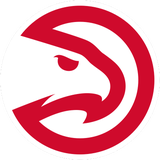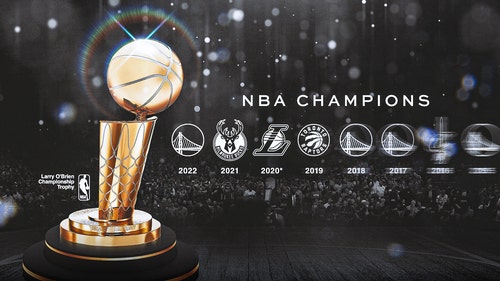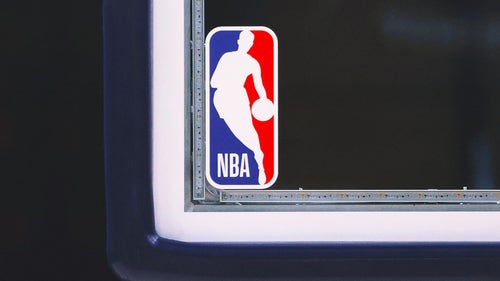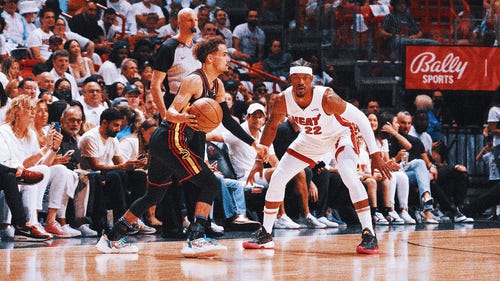
5 power forwards the Miami Heat could target in the 2017 NBA Draft
Dec 17, 2016; Berkeley, CA, USA; California Golden Bears forward Ivan Rabb (1) dribbles against Cal Poly Mustangs forward Aleks Abrams (1) in the first period at Haas Pavilion. Mandatory Credit: John Hefti-USA TODAY Sports
Here’s a somewhat early look at the power forward position in the 2017 NBA Draft, and who the Miami Heat could target.
Since we last spoke, not much has changed in regards to the Miami Heat’s lottery odds. The team currently sits at 10-21, with a 39 percent chance of landing the sixth pick in the draft (via Tankathon). And though they currently have just an eight percent chance of getting the top overall pick, two of the teams with better odds are only two losses ahead of the Heat.
Meaning it may soon be time to expedite the process a bit. Perhaps by moving a certain Slovenian point guard to a different team in exchange for future assets.
Regardless of what Pat Riley and his staff decide to do, it’s clear what the biggest position of need on the roster is. Despite James Johnson’s surprising play, the power forward spot is still a major weakness.
So today, we’re going to take a look at the power forwards available in next year’s draft, and who might be a good fit in Miami.
Dec 17, 2016; Houston, TX, USA; Arizona Wildcats forward Lauri Markkanen (10) drives to the basket during the first half against the Texas A&M Aggies at Toyota Center. Mandatory Credit: Troy Taormina-USA TODAY Sports
Lauri Markkanen (Arizona)
Power forward is the weakest position in the 2017 class. Thus, Draft Express has Lauri Markkanen out of Arizona as the first one taken, but not until the eighth pick to Philadelphia. Why the 76ers would possibly want another big man is beyond me.
What cannot be questioned though, is Markkanen’s talent level. The Finnish 7-footer has ideal size for play the 4 in today’s NBA. He may lack the length to become a great rim protector at the pro level, but his pure skill is what sets him apart as a prospect.
Like a lot of other European big men before him, Markkanen is an exceptional shooter. He’s currently making 44 percent of his three point attempts and 83 percent of his free throws. He also leads his team in scoring and rebounding, at 16 points and seven boards per game.
Markkanen isn’t just a spot-up shooter either. He can also get buckets off the dribble, which is what makes him so enticing to NBA teams. Just watch the following clip:
You will see that the Finnish power forward catches the ball at his preferred area: the three-point line. He notices his defender is off-balance, so he quickly takes two power dribbles with his weak hand. And he finishes the move by rising up at the elbow, and nailing the midrange jumper over the smaller guard. Not an easy move for anyone to make. Let alone a 19-year-old kid.
Just so you could see his abilities as a spot-up shooter as well, observe:
I'm sorry but this is just a ridiculous three-point shot that college freshman shouldn't be able to make #LauriMarkkanen #ArizonaWildcats pic.twitter.com/RWFiEFXXUs
— David Kelly (@DavidKellyTNN) December 21, 2016
End of shot clock situation, Markkanen ends up with the ball and a guard covering him. With three seconds left before a violation, he rose confidently, with just a foot on the NBA three-point line, and nailed the shot. Impressive.
As far as his defense goes, I mentioned that he lacks length, making it difficult to project him as an NBA shot-blocker. And though he’s not the athlete that some of the other guys in his draft class are, he does possess one trait that will help him at the next level: quick feet. That attribute is vitally important in today’s NBA. A lot of the top defenses in the league have a big man who can switch onto guards, and disrupt pick-and-roll situations.
Heat fans will remember that they used to have a player with a similar ability. Here you can see what I mean (via SBNation):
Here’s Markkanen in a similar situation:
It would be unfair to compare the Arizona freshman to Chris Bosh, who’s going to be in the Hall of Fame one day. But Bosh also had quick feet, and a capability to switch, which made him one of the best big men defenders in the NBA. Markkanen has the potential to be similarly disruptive.
Even if he never becomes a shot-blocker, it’s fair to point out that Bosh never became one either (the most he ever averaged was 1.4). However, there’s more than one way to be considered a great defensive player. And being able to cover players a foot smaller than you long enough to torpedo an opposing team’s offensive set is one of them.
The much easier comparison to be made between the two power forwards is that they’re both phenomenal shooters. As far as Miami is concerned, that means Markkanen could fill the same role left behind by Bosh. If the team does keep Dragic, the pick-and-pop possibilities that were originally meant for the point guard and the Heat’s former star, could be very tempting for Riley.
For an even more detailed outlook on Markkanen’s potential (and shortcomings), I highly recommend this piece from The Step Back.
Dec 17, 2016; Berkeley, CA, USA; California Golden Bears forward Ivan Rabb (1) dunks the ball against the Cal Poly Mustangs in the second period at Haas Pavilion. Cal won 81-55. Mandatory Credit: John Hefti-USA TODAY Sports
Ivan Rabb (Cal)
In an era that’s dominated by top prospects going to college for a year and then hightailing it out of there as quickly as possible, Ivan Rabb is an anomaly. After arriving at Cal as the seventh overall recruit in the country, and having success as a freshman, Rabb surprised people by announcing he’d be returning for his sophomore year.
His reasoning was simple. He said that the NBA wasn’t going anywhere, and he’d still be in a position to go in the lottery after another year of seasoning.
Thus far, early returns on his decision deem it questionable.
Rabb has managed to up his scoring, rebounding, and assists from his freshman year campaign. He currently averages 15 points, nine boards, and two dimes per contest. It came at a cost though: his efficiency. The sophomore’s shooting percentage has dipped to 55 percent after being at 62 in his first year. And his free throw shooting, which was already poor, managed to get even worse.
That’s due to the fact that he’s trying to change his game to look more appealing to NBA teams. Rabb is a player, who despite having solid size (6-foot-10 with a 7-foot-2 wingspan), struggles in one area most stretch-4’s of his ilk excel. And that’s shooting the basketball.
Today’s top teams have bigs who can stretch the floor. That doesn’t mean that your big men have to be adept shooters but, if they’re not, they need to be good playmakers at the very least. The teams with the best offensive ratings all feature fours who fall into one of those two categories. Ryan Anderson, Kevin Love, Draymond Green and Blake Griffin all immediately come to mind.
Meanwhile, Rabb, is limited in not just his shooting but in his passing as well. He averaged less than one assist per game as a freshman. And that number hasn’t risen enough this year to make a difference. That has led many analysts to believe that his future in the NBA will be as a small-ball center.
Does that mean he can’t one day blossom into a valuable NBA player? Of course not. Just two years ago, Kenneth Faried, a somewhat comparable tweener-type (although Rabb doesn’t have the same athleticism), had early success, and got a $60 million extension from the Denver Nuggets out of it. So there is precedent.
But would Riley and Heat brass necessarily want another center who can’t shoot coming off the bench? I doubt it.
Even more worrisome are Rabb’s defensive deficiencies. Despite his length, he doesn’t really block shots (averaging just one per game). Further, his feet don’t move as smoothly as Markkanen’s, which makes it difficult for him to switch onto guards. And his thin frame sometimes gets backed down rather easily, even at the college level.
Despite all the negatives, the Cal power forward does do a lot of other things well. He has a solid face-up game in the mid-post, runs the floor, and has excellent hands for a big. And even though he’s not a leaper by any means, his reach and tenacity make him a great rebounder. I started the following clip at a point that shows four straight impressive offensive sequences by Rabb. They’re mostly all in the post:
You can see his hands, his pick-and-roll finishing ability, and finally, his length (which helped him finish the alley-oop), all at full display.
But still, I just don’t see a fit for Rabb and the Heat, barring a Hassan Whiteside trade. Even then, it would probably be an awkward match for both parties.
Dec 21, 2016; Greensboro, NC, USA; Duke Blue Devils forward Harry Giles (1) stands on the court in the second half against the Elon Phoenix at Greensboro Coliseum. Duke defeated Elon 72-61. Mandatory Credit: Jeremy Brevard-USA TODAY Sports
Harry Giles (Duke)
If not for his lengthy injury history, Harry Giles would be Miami’s top target at power forward. Not only that, he would be in the running for the number one overall pick. Unfortunately for Giles though, his lack of health throughout his young career will give many teams pause come draft time.
That injury history includes Giles tearing the ACL in each knee. It happened once in his sophomore year of high school, and then during the first game of his senior year as well. Further, just before starting his college career, he suffered another setback. Once again, it was knee related.
Duke will be without star freshman Harry Giles to begin the 2016-17 season after undergoing knee surgery. https://t.co/vDn6sVL08S
— Ball Durham (@Ball_Durham) October 5, 2016
Since then though, he has (finally) made progress. Despite speculation that he may sit out his freshman year and go straight to the NBA, Giles suited up for Duke and officially started his college playing career.
Coach Mike Krzyzewski has brought him along slowly. Giles has played a total of ten minutes in two games, and still hasn’t scored his first collegiate basket. And that’s alright, it’s still a step in the right direction.
Even with all the injuries, the young big man has loads of potential. Giles has excellent size for the power forward position. He’s listed at 6-foot-11, with a monstrous 7-foot-3 wingspan. And though he could use more strength, he currently weighs in at a solid 240 pounds.
Giles is also an elite athlete, with a quick second jump, that helps him feast on rebounds. At the high school level, he was phenomenal on both the defensive and offensive glass. Just take a look:
His leaping ability and length help project him as a shot-blocking menace at the NBA level. And though his offensive game needs polish, he has shown that he can knock down the mid-range jumper. Giles is also extremely agile for his size, can run the floor like a gazelle, and has huge hands that make catching the ball in traffic look easy.
For Miami, Giles would be an interesting fit. Even though he may look like a future small-ball center, he’s the type of player that’s good enough to make himself work on any team. A lineup featuring Whiteside and Giles would have a chance to become one of the best rebounding units in the NBA. And thanks to his agility, the Duke forward does a good job guarding perimeter-oriented big men. Meaning that he and Whiteside could work very well together defensively, with one protecting the paint while the other (presumably Giles), mans the outside.
Ultimately, Giles’ draft stock will come down to his health. If he can play this season without a recurrence of serious injury, and show that he hasn’t lost that elite athleticism, he’ll probably go in the top five of the draft, even despite everything he’s been through. That would make for quite the story, and everyone should be rooting for him.
Nov 25, 2016; Paradise Island, BAHAMAS; Michigan State Spartans guard Miles Bridges (22) dribbles past Wichita State Shockers guard Conner Frankamp (33) during the second half in the 2016 Battle 4 Atlantis in the Imperial Arena at the Atlantis Resort. Mandatory Credit: Kevin Jairaj-USA TODAY Sports
Miles Bridges (Michigan State)
Miles Bridges is the fourth player on our list. The Michigan State freshman is currently projected to go 14th in the NBA draft, to the Indiana Pacers (via Draft Express). And despite missing time due to an ankle injury, which is not expected to be serious, Bridges has gotten off to a fast start. Though the Spartans have struggled early, by their standards at least, it is not due to the play of the 18-year-old forward.
After all, he leads the team in scoring and rebounding, at 17 points and nine rebounds per game, and is third on the team in assists. Oh, and he’s also averaging one-and-a-half blocks for good measure.
Simply put, Bridges is a beast. Despite not having great height for the position (just 6-foot-6), he’s got exemplary strength. Even though he’s only 18, he’s already got a well-developed frame that checks in at 226 pounds. He possesses the bulk necessary to defend opposing power forwards in the post, but also has the athleticism to defend wings on the perimeter.
For an example of his athleticism, just check this out:
You probably shouldn't miss boxouts against Miles Bridges. pic.twitter.com/1nXmoP58E4
— Rob Dauster (@RobDauster) November 30, 2016
Though Bridges is better jumping off of two feet than one (which could hamper his ability to take off in the half court), he’s freakish at finishing above the rim. Here’s one more example, just because it’s fun to watch:
Bridges has become known as a combo forward. He can get out and run in transition, he’s a willing passer, and has shown that he can knock down catch-and-shoot threes. Although he has a low release on his shot, which may not translate well to the NBA, he’s making threes at an above average 39 percent clip.
People may want to compare that to Justise Winslow, another combo forward who had a similar weakness coming into college. During Winslow’s only year at Duke, he seemed to stifle critics by making 42 percent of his threes. Sadly (for Heat fans), it has not carried over to the NBA. Yet, at least.
The difference between the two, however, is that Winslow only shot three three-pointers per game; Bridges is shooting almost five, yet still maintaining his efficiency.
In essence, Bridges is a bulky, high-flier who can play inside and out. He could become a mismatch nightmare in the NBA. Too big to cover with a small forward and too quick to guard with a power forward. Though he and Winslow have comparable games, Bridges is a better athlete, which could help in one area that Winslow struggles: finishing around the rim.
And even if the two are similar, adding Bridges to the Heat’s roster would give Miami a nice element of versatility. Two strong, competitive guys from winning programs, who can defend inside and out. If his jumper remains effective throughout the season, expect Riley and GM Andy Elisburg to keep a close eye on him come June’s draft.
Dec 27, 2016; Syracuse, NY, USA; Syracuse Orange forward Tyler Lydon (20) takes a jump shot as Cornell Big Red guard Wil Bathurst (20) and guard Robert Hatter (5) defend during the second half of a game at the Carrier Dome. Syracuse won 80-56. Mandatory Credit: Mark Konezny-USA TODAY Sports
Tyler Lydon (Syracuse)
Syracuse sophomore Tyler Lydon is a player that the Heat could target if they were to acquire a second first round pick. He’s currently projected to go just after the lottery, at the 17th pick to the Atlanta Hawks, by Draft Express.
Lydon has average size and length for a power forward. He’s 6-foot-9, with a 6-foot-11 wingspan. Despite that, he’s a bouncy athlete, who, like Bridges, is more explosive jumping off of two feet:
However, unlike Bridges, Lydon lacks strength. Which is going to be a major talking point for his stock from now until the draft. If he doesn’t get stronger, he doesn’t stand a chance defensively at the NBA level. He wasn’t blessed with the foot quickness to defend on the perimeter like a lot of the aforementioned prospects in his class.
The sophomore could also stand to become more aggressive. He shies away from contact when driving the basketball and when posting up, too.
Despite the slight flaws to his game, Lydon is a terrific shooter. He’s making 41 percent of his three-pointers, while averaging 12 points and eight rebounds per game. Even with his relatively weak frame, Lydon is still an adept rebounder, thanks to his instincts and hops. He’s also quick for a big man, and not only does damage as a pick-and-pop four, but also when slipping the pick-and-roll.
Though he doesn’t have the upside of a Markkanen, or a Bridges, Lydon could still be a nice back-up plan at power forward for the Heat.
Stick with me for a second. Imagine the Heat trade Dragic to the Chicago Bulls, in exchange for the permanently-disgruntled Rajon Rondo and Chicago’s first round pick. That would leave Miami in a very favorable position.
The Heat would really speed up the process by getting rid of Dragic. He’s the team’s either best or second-best player, and the offense looks awful in minutes he’s not on the floor. I know “on/off” stats don’t back up my claim, but we could use the good ole’ eye test for this one. Tyler Johnson and Josh Richardson aren’t pure point guards like Dragic, and don’t run the offense anywhere near as well.
So Miami ends up losing more games, and secures a top-five pick. With that pick, they take a player like Malik Monk or Josh Jackson, who could quickly help the team’s scoring issues from the wing. And with the Heat’s second first round pick, from the Bulls (which projects to be between 15-18), they take a guy like Lydon, who they could eventually groom into a legitimate NBA stretch four.
I know, that’s a lot of speculation. But hey, when your team is 10-21 and the injury issues just won’t go away, there’s not much else to do but look to the future and speculate.
That’s all for today, Heat fans. Next time, we look at the small forwards of the 2017 Draft. There are a couple of really talented wings currently projected to go in the top ten, and you should start to get to know them well.
More from All U Can Heat
This article originally appeared on




